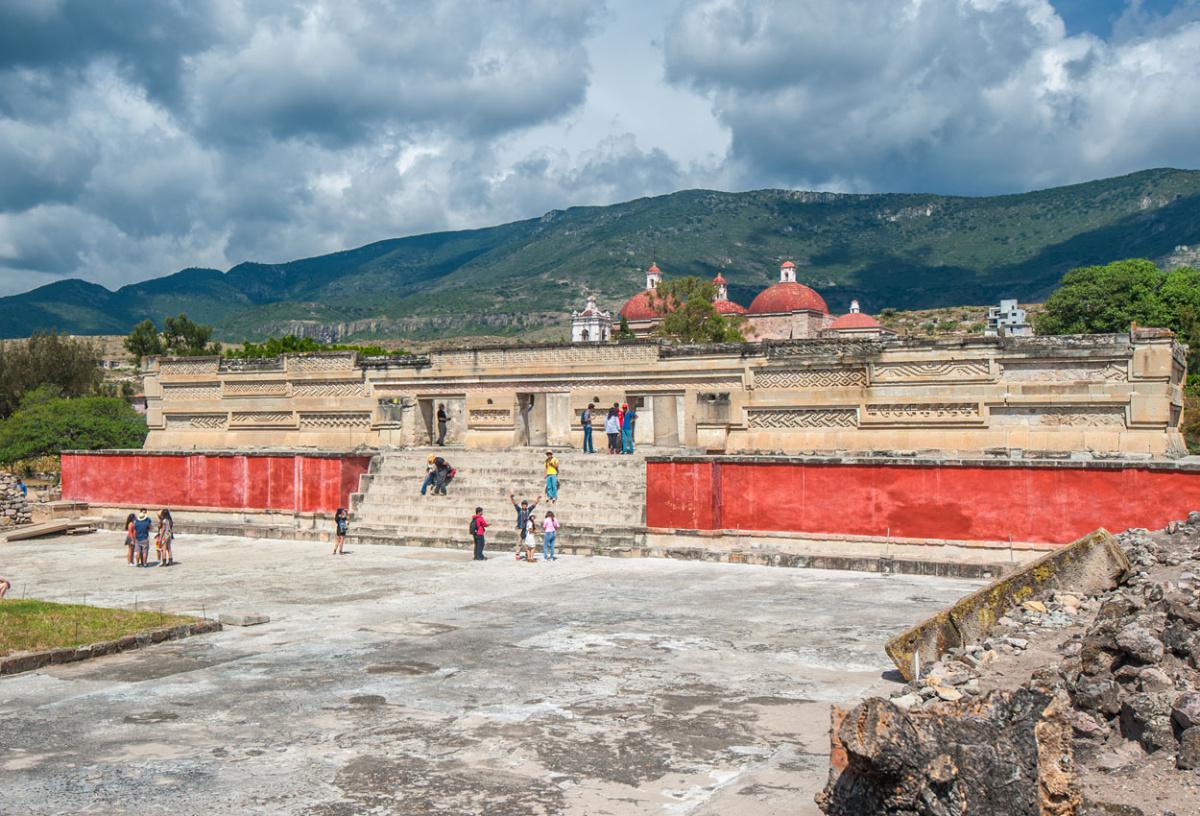A geophysical study has found underground structures and tunnels beneath Mitla – The Zapotec “Place of the Dead”
Mitla is an archaeological site associated with the Zapotec culture, located in the Oaxaca Valley in the present-day state of Oaxaca in southern Mexico.
The Zapotec civilisation emerged in the late 6th century BC, originating in the Central Valleys of the Etla. The culture was centred on the settlements of Oaxaca, San José Mogote, and Mitla, with the city of Monte Albán serving as the civic-ceremonial centre.
At its peak, the Zapotec had a population of more than 500,000 inhabitants, having developed sophisticated construction techniques, a writing system, two calendar systems, and complex agricultural cultivation.
In 2016, the Lyobaa Project, an institutional collaboration led by the National Institute of History and Anthropology (INAH) employed ground penetrating radar (GPR), electrical resistivity tomography (ERT), and ambient seismic noise interferometry (AIRSA) to explore potential archaeological features beneath the San Pablo Apóstol church, built atop the Zapotec ruins in Mitla.
According to local legend, the church was constructed on an entrance way to an underground labyrinth, serving as a passage between the realm of the living to the realm of the dead, referred to as Mictlán in Nahuatl, meaning the "place of the dead" or "underworld."
In 1674, the Dominican chronicler, Francisco Burgoa, described Spanish missionaries entering the labyrinth: “Such was the corruption and bad smell, the dampness of the floor, and a cold wind which extinguished the lights, that at the little distance they had already penetrated, they resolved to come out, and ordered this infernal gate to be thoroughly closed with masonry.”
As part of phase two of the Lyobaa Project, the researchers have identified buried architectural complexes and a series of corridors during a study of the Calvario, Arroyo, and del Sur groups within the archaeological zone.
The Arroyo group, located in the central area of the site has three quadrangle features connected by tunnels that likely date from AD 1200 during the Late Postclassic period.
The project also conducted a survey of the quadrangular plaza where the San Pablo Apóstol church was constructed on the remains of a pre-Hispanic temple. Beneath the plaza the researchers found that there are four mounds with clay internal cores.
Archaeologist, Denisse Argote, said: “We were able to determine that, although the core of the stepped structure is solid, the foundation of the historic church requires short-term intervention to guarantee its conservation, so measures must be taken to ensure its structural stability."
“There are cracks in the historic building, since it does not have a foundation and, underneath, in what corresponds to the remains of the pre-Hispanic building, it seems that there are areas with small cavities,” added Argote.
Header Image Credit : Shutterstock
Sources : INAH


